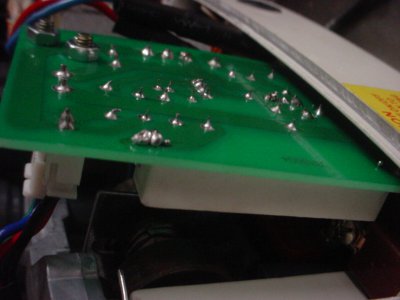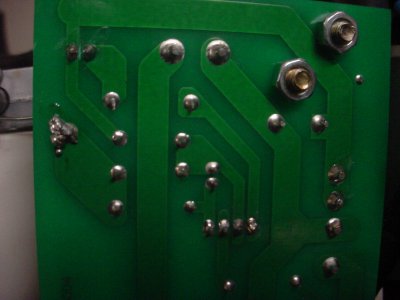- Joined
- Oct 17, 2018
- Messages
- 922
I fixed it. I was testing it before I put it back and it worked. Put it in and it didn't. Took it out again and noticed that it worked intermittently as I moved it around. To get to the point, I noticed it worked when I flexed the circuit board. I discovered a cracked soldering joint in that big ol' heat sink (large, white square component). I added some solder, tested it again and it seems to have solved the problem. I'll let you guess where I soldered.





